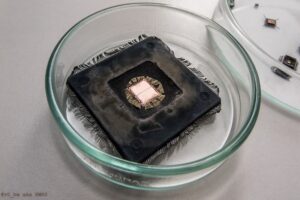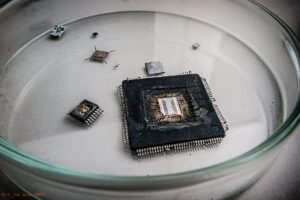Extracting the Microchip PIC16F1703 program heximal requires a deep understanding of embedded systems and various decryption methods. The PIC16F1703 microcontroller often holds crucial firmware and source code stored in its EEPROM or flash memory, making it a challenge to crack or decrypt its contents without causing data loss. When one attempts to extract heximal code from this microcontroller, care must be taken to manage the binary data format that stores key program instructions.
To restore or copy the program accurately, engineers must convert the data into readable heximal code, preserving the original sequence and structure of the firmware. This extraction process is particularly useful when needing to replicate the microcontroller’s function in another device or when reverse engineering is necessary for troubleshooting. However, without the right approach, attempts to access protected EEPROM data may corrupt the program, as security mechanisms are in place to prevent unauthorized access.

By decrypting and carefully managing each bit of data, it’s possible to maintain the integrity of the PIC16F1703’s program, ensuring that any restored source code functions precisely as intended. Proper extraction and handling of the heximal data enable reliable duplication and analysis of this essential microcontroller program.
The Fixed Voltage Reference, or FVR, is a stable voltage reference, independent of VDD, with 1.024V, 2.048V or 4.096V selectable output levels, which is quite useful for Extract Microchip PIC16F1703 Program Heximal.
The output of the FVR can be configured to supply a reference voltage to the following:
- ADC input channel
- ADC positive reference
- Comparator positive input
The FVR can be enabled by setting the FVREN bit of the FVRCON register.
The output of the FVR supplied to the ADC module is routed through a programmable gain amplifier. The amplifier can be configured to amplify the reference voltage by 1x, 2x or 4x, to produce the three possible voltage levels of Copy Data Of MCU PIC18F458.

The ADFVR<1:0> bits of the FVRCON register are used to enable and configure the gain amplifier settings for the reference supplied to the ADC module. Reference Section 16.0 “Analog-to-Digital Converter (ADC) Module” for additional information when Extract Microchip PIC16F1703 Program Heximal.
When the Fixed Voltage Reference module is enabled, it requires time for the reference and amplifier circuits to stabilize the Microcontroller Unlocking. Once the circuits stabilize and are ready for use, the FVRRDY bit of the FVRCON register will be set to faciliate Secured Chip PIC18F452 Program Extraction. See Section 25.0 “Electrical Specifications” for the minimum delay requirement.
bit 7 FVREN: Fixed Voltage Reference Enable bit
0 = Fixed Voltage Reference is disabled

1 = Fixed Voltage Reference is enabled
bit 6 FVRRDY: Fixed Voltage Reference Ready Flag bit(1)
0 = Fixed Voltage Reference output is not ready or not enabled
1 = Fixed Voltage Reference output is ready for use
bit 5 TSEN: Temperature Indicator Enable bit
0 = Temperature Indicator is disabled
1 = Temperature Indicator is enabled
bit 4 TSRNG: Temperature Indicator Range Selection bit
0 = VOUT = VDD – 2VT (Low Range)
1 = VOUT = VDD – 4VT (High Range)
bit 3-2 Unimplemented: Read as ‘0’
bit 1-0 ADFVR<1:0>: ADC Fixed Voltage Reference Selection bits
00 = ADC Fixed Voltage Reference Peripheral output is off
01 = ADC Fixed Voltage Reference Peripheral output is 1x (1.024V) 10 = ADC Fixed Voltage Reference Peripheral output is 2x (2.048V)(2) 11 = ADC Fixed Voltage Reference Peripheral output is 4x (4.096V)(2) to Read Out Locked PIC18F448 MCU Data
Note 1: FVRRDY is always ‘1’ on PIC16F151X only.
2: Fixed Voltage Reference output cannot exceed VDD.


